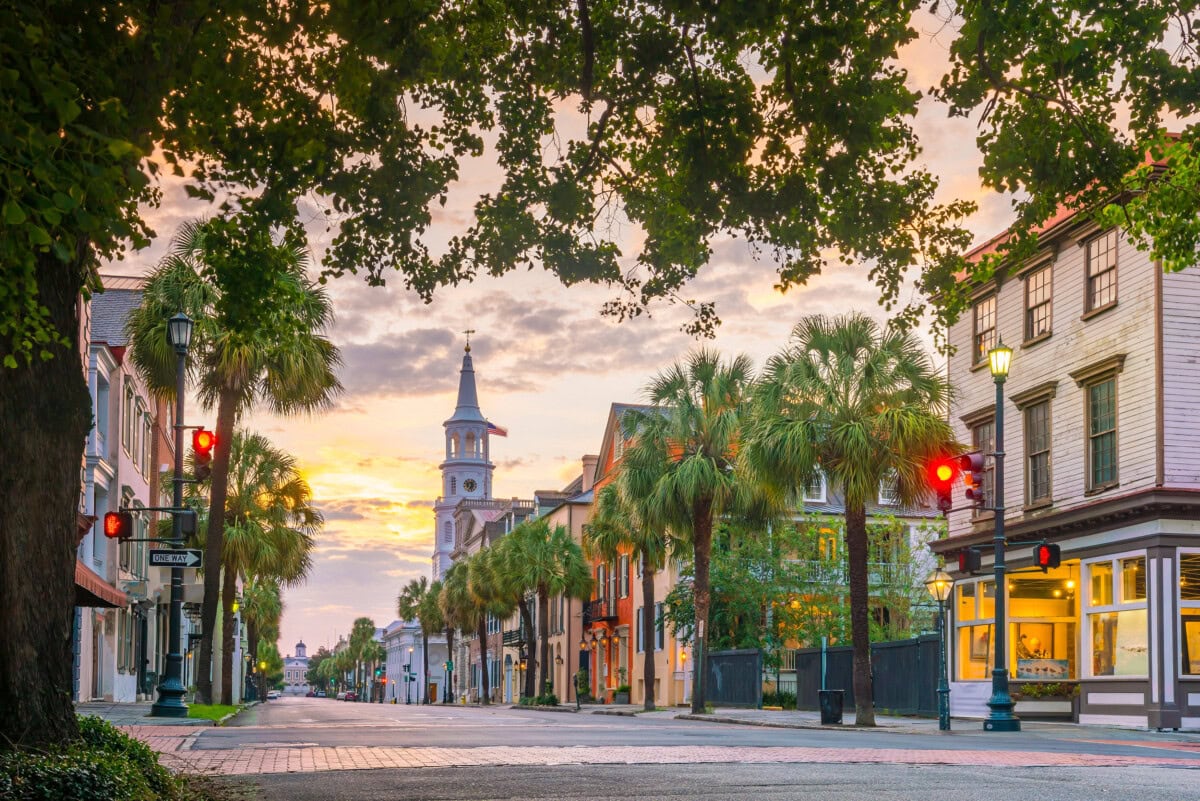North Melbourne resident Elio Sarpi has turned a passion project and residential curiosity into a cult following on Instagram via his account, Houses of North and West Melbourne.
The IT worker travels the streets of both suburbs taking photographs of homes that pique his interest –chasing historic records and retelling histories that have long been forgotten.
Elio Sarpi explores historical homes in North Melbourne and West Melbourne. Picture: Elio Sarpi
These Victorian dwellings of the past have become interesting fodder for locals too – who not only learn about the homes and commercial properties in the suburbs, but hold the key to an intriguing past of the sort of characters who lived and worked there.
“Investigating a house feels like solving a jigsaw puzzle,” Mr Sarpi says.
“I quickly became addicted once I started. I don’t watch TV anymore; instead, I spend my evenings researching houses I’ve recently photographed, or diving into the thousands I’ve documented over the years."
Elio Sarpi explores historical homes in North Melbourne and West Melbourne. Picture: Elio Sarpi
The project really kicked off once COVID kicked-in. A chance to meander the streets and take photos of Victorian heritage buildings and put their stories together – from when they were built to those who lived in them.
With 24.4K followers on Instagram, Sarpi investigates at his leisure; often finding himself buried deep down a proverbial rabbit hole of detective work.
“I started researching the stories behind these homes – their history, architecture, and the lives that shaped them,” Sarpi says.
“I’ve uncovered some truly incredible stories and connections – actors, pianists, artists, singers, bands, photographers, opera singers, even a Governor General."
Elio Sarpi explores historical homes in North Melbourne and West Melbourne. Picture: Elio Sarpi
His site covers stories of migration, robberies, house fires and other homes linked to royalty.
“I recently found out that I now live in a house where a Chinese translator once lived. He had come to Australia to work on the goldfields,” says Sarpi.
The local community is also great for intel – often getting in touch to share other tid-bits that’s useful in his exploration of the suburbs past.
Many well-known faces called the suburb home, too – including actress Sigrid Thornton, who recently sold her home on Canning Street, and TV and radio personality Virginia Trioli who has lived in North Melbourne since the 1980s.
The Limerick Castle Hotel, North Melbourne. Picture: Elio Sarpi
Sarpi also explores hotels that still stand on many corners in North Melbourne. The Limerick Castle, which was first licensed in 1863 has a colourful lodging past and was once run by Richmond football club forward William John Titus [or Jack as he was known from 1908-1978].
Then there’s the Ukrainian Church on Dryburgh Street which was designed by architects Smith & Tracey and completed in 1963.
Some of Sarpi’s favourite discoveries
The Lamberti House on Queensberry Street
This beautiful home, built in 1962, was designed by Johannes (John) Wallinga (1909–1970), an architect born in Groningen, the Netherlands.
The Lamberti House on Queensberry Street. Picture: Elio Sarpi
The Lamberti family once owned a thriving music shop on Victoria Street, for which Wallinga also designed the interior. When the family contacted me after I first posted the house, they couldn’t recall the name of the architect. With a few helpful clues from Mrs. Lamberti – now in her nineties – and some assistance from the City of Melbourne, we were able to confirm Wallinga as the designer.
Milton Hall
A grand and ornate Victorian residence built in 1884, Milton Hall was, in more recent times, the home of Hugh O’Neill AO (1933–2022).
Coincidentally, I posted a photo of the house on the very day he passed away, and received messages informing me of his death.
Milton Hall. Picture: Elio Sarpi
The family later reached out, invited me to visit the home, and kindly shared their stories. I asked his daughters to share some of their cherished memories of growing up in the house, which I featured in a follow-up post.
Two 1869 West Melbourne Terraces on Abbotsford Street
In the 1970s, these historic terraces became La Chaumière, a French restaurant run for nearly 30 years by Géraldine and Gérald Georges. The chef was Jean-François Enconnière.
1869 West Melbourne Terraces on Abbotsford Street. Picture: Elio Sarpi
The couple painted the balconies of both terraces in the colours of the French flag and added '1789' to the front – a nod to the start of the French Revolution. I shared a fantastic old photo alongside my post about the place.
One of the current owners commented, mentioning it was a favourite spot for the Labor Party – and that Gough Whitlam held his inauguration dinner there.
Florence Cottage on Capel Street West Melbourne
Built in 1865, became home to Italian immigrant Matteo Cristofaro in 1934. There, he co-founded an anti-fascist group, the Italian Group Against War, to rally Italian-Australians against Fascism and support the Communist Party.
By 1942, he helped form the Movimento Italia Libera, holding their first rally in 1943. Anti-fascists were often seen as troublemakers bringing foreign conflicts to Australia.
Florence Cottage. Picture: Elio Sarpi
I posted the house with the song Bella Ciao, the Italian folk song that was used as an anthem for the anti-fascist resistance and sung worldwide as a hymn of freedom.
After my post, his family reached out they were so grateful for my post. They knew he lived in the area, but they didn’t know he lived in Florence Cottage, they sent me a photo of him that I also posted.
Charlton Cottage on Flemington Road, North Melbourne known as Paris
One of my followers introduced me to a 94-year-old man who was brought home to Charlton Cottage as a newborn. I had the privilege of meeting him and spent a couple of hours listening to stories about his childhood in North Melbourne.
Charlton Cottage. Picture: Elio Sarpi
He wasn’t sure of the exact number of his old house, but I was able to track it down. I took a photo of it, researched its history, and shared a couple of posts about it.
Later, when I heard he was in hospital, I had the photo printed. The person who originally connected us kindly delivered it to him. He was so proud of that photo – he showed it to all the doctors, nurses, and visitors. Sadly, he passed away during that same hospital stay. I am so grateful that I have his memories documented.
Ned Kelly Errol Street connection
These two-storey Italian Renaissance-style terraces on Errol Street, North Melbourne, date back to 1912. They were built as rental properties for Joseph Grigg, son of George Grigg, a prominent 19th-century coach builder.
George Grigg owned the elegant three-storey terrace across from North Melbourne Primary School.
The Joseph Grigg who commissioned these Errol Street terraces may be the same man who crafted Ned Kelly’s iconic suit of armour.
A skilled blacksmith and coach builder based in South Melbourne, Joseph reportedly played a remarkable role in one of Australia's most infamous outlaw legends.
Decades earlier, in his late 20s, Joseph was running a blacksmith shop in Glenrowan when Ned Kelly and his gang stormed in, forcing him to manufacture the iron armour later worn in Kelly’s final standoff at the Glenrowan Hotel.
Held under lock and key, Joseph used parts from ploughs and harvesting machines to construct the suit. When the work was done, Kelly paid him handsomely in gold sovereigns. Joseph promptly reported the incident in a confidential meeting with the authorities, who told him to keep the payment, recognising he had earned it through no fault of his own.
Following Kelly’s capture in July 1880, crowds gathered at North Melbourne Station to catch a glimpse of the infamous bushranger as he was transported to the Old Melbourne Gaol. Just four months later, on November 11th, Kelly was hanged. Remarkably, Joseph’s involvement in crafting the armour remained a secret until his death in 1934.
Opening the door to history
“The first thing I do is consult the Sands and McDougall Directories – annual directories published in Melbourne throughout the 19th and 20th centuries. They were like a mix of a phone book, business directory, and local government record. They’re available online via the State Library of Victoria, covering the years 1860 to 1974,” says Sarpi.
He then traces the current house number back through the years to determine what it would have been in the past, noting who lived there and who the neighbours were.
Home on Howard Street. Picture: Elio Sarpi
“From there, I dive into Trove, the free online platform developed by the National Library of Australia. I also use the Public Record Office Victoria (PROV), which includes records related to family history, local government, land and property, immigration and passenger lists, and even education," he says.
"There are countless resources, the State Library of Victoria has a helpful online video that introduces the basics and outlines many of the available resources. They also occasionally run free sessions on how to research the history of your house."
Little Provost. Picture: Elio Sarpi
And of course, there’s his followers online.
“They also send me leads and share precious personal social history and photos that are just priceless,” says Sarpi.
“When you think about how many lives have passed through a single house over the years, the potential stories are endless. People often say 'if these walls could talk', now – with the community’s help through shared memories and documented facts – it feels like those walls are starting to speak. I'm sharing stories that might have otherwise been forgotten, and that’s something truly special.
“One of the most rewarding parts is helping families reconnect with the homes of their ancestors. It’s become a project that keeps growing and giving back in unexpected ways.”



















 English (US) ·
English (US) ·